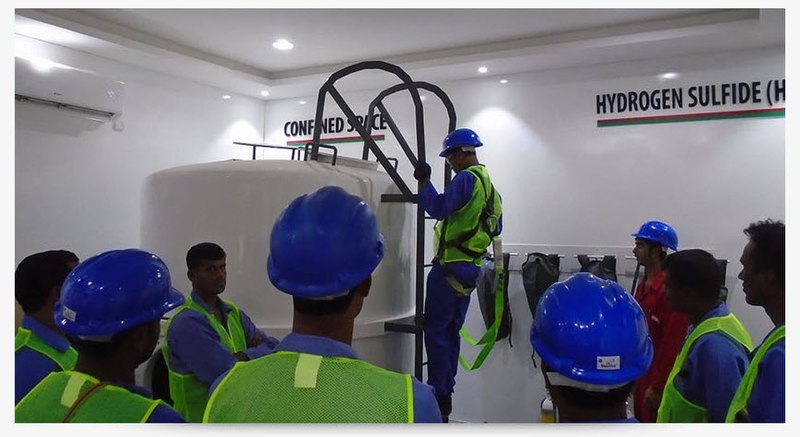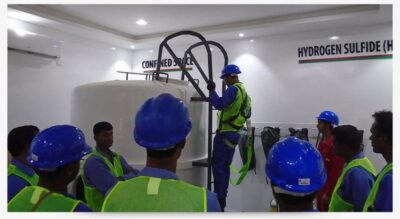- May 31, 2023
- Posted by: David Marshall
- Category: Management, Manufacturing, Safety

Safety should be the number one priority in any manufacturing plant, but your managers should not be the ones establishing the safety rules. Your associates should be your safety experts, and they should be the ones making the rules and running the safety training program.
After all, they’re the ones performing the tasks, and they’re the ones who have intimate knowledge of the safest way to do the work. So let them decide what’s safe and what’s not. After all, it’s their life — or at least their fingers — on the line.
If nothing else, this helps them be more engaged in their work. If they’re not intellectually and emotionally engaged with what they’re doing, they become automatons, and even artificial intelligence could do the same job.
I have seen plenty of situations where the managers were the people in charge of a plant’s safety, and it went badly.
 When I was working at Robroy, we had an equipment operator who was on a leave of absence. The supervisor decided he needed someone to operate that piece of equipment, so he assigned a new operator to work it. The operator was very reluctant to do so, but the supervisor overrode him and made him do it.
When I was working at Robroy, we had an equipment operator who was on a leave of absence. The supervisor decided he needed someone to operate that piece of equipment, so he assigned a new operator to work it. The operator was very reluctant to do so, but the supervisor overrode him and made him do it.
The issue came to my attention through my VP of Operations, Billie Traywick. Her recommendation was that we fire the supervisor, which we subsequently did.
That’s because my number one non-negotiable is Safety. Keep people safe at all times, and don’t put an individual at risk.
The supervisor didn’t do that, and he used his position to force the operator to work on a piece of machinery he hadn’t been trained on.
The operator was fine, and he kept his position. But we also told him he was well within his rights to refuse to do the work, and he never would have been fired for refusing.
Safety concerns should never be compromised, and as managers, we cannot subject our associates to unnecessary risks.
Don’t Just TELL People They’re In Charge of Safety, Train Them
Just telling people that they’re in charge of safety is not enough. You need to provide comprehensive safety training and support. It’s like when you learn to ride a bike. You don’t just jump on and go, you need someone to show you how to balance, pedal, and brake safely.
The same goes for safety in the workplace.
You also need to create an environment where everyone is responsible for safety, which means they’re responsible for each other. And create an environment where people feel comfortable speaking up and have their concerns addressed quickly.
If an associate notices something unsafe or sees someone breaking the safety rules, they need to report it. When they do, management has to take it seriously. Imagine someone had bypassed a safety sensor on a machine. You’d want someone to report it rather than receive a report that another person’s arm had been crushed by a 12-ton hydraulic press.
You also need to provide comprehensive training, to give them the knowledge and skills to keep themselves and others safe. Teach them about proper equipment usage, hazard identification, and emergency protocols. With this knowledge, associates can confidently navigate their jobs and minimize the risks.
Let Your Associates Develop Your Safety Training Program
They have valuable firsthand experience with the work they perform every day. They know the ins and outs, the potential risks, and the best ways to stay safe. They are the experts in their own jobs. By recognizing their expertise, you can ensure the safety measures they create will be effective and tailored to the specific tasks being performed.
This fosters a culture of trust. Imagine a workplace where associates feel comfortable raising safety concerns without fear of reprisal. It creates a team where everyone looks out for each other. By building this culture of trust, associates will be more likely to speak up and address safety issues promptly.
In the end, your associates should be your safety experts.
Their expertise and firsthand experience helps them identify potential hazards and implement appropriate safety measures. By training them, taking reports seriously, and fostering a culture of trust, we empower associates to actively create a safe working environment, and that makes the business better for everyone.
I’ve been a manufacturing executive, as well as a sales and marketing professional, for a few decades. Now I help companies turn around their own business, including moving to an associate-driven safety training model. If you would like more information, please visit my website and connect with me on Twitter, Facebook, or LinkedIn.
Photo credit: DLPqatar (Wikimedia Commons, Creative Commons 4.0)

